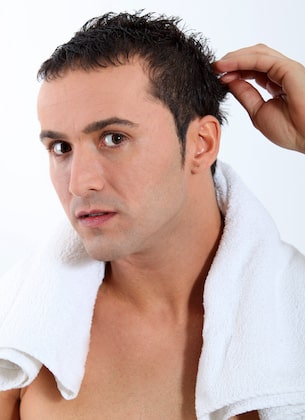Permanent Hair Loss – Causes Revealed
Hair loss is a common medical issue on the scalp for both men and women. The hair loss can take the form of bald spots or thinning hair on the scalp and these conditions on the scalp can often be caused by the genetics and family history of the patient. In addition, there are some cases of temporary hair loss that can be the result of a radiation treatment for medical reasons or sudden stress in the life of the person. Since they cause temporary hair loss, the hair of the patient will normally begin to grow again after the cause of the hair loss has been resolved. For patients that have lost their hair due to genetics, they often need undergo a hair restoration surgery, such as Follicular Unit Extraction (FUE) hair transplant, to restore the hair that was lost in order to provide a full and healthy head of hair on the scalp that is also natural in appearance.
Let’s take a look at some of the permanent causes of hair loss and the steps patients can take to address the issue.
Permanent Hair Loss – Causes for the Condition
 As mentioned above, the genetics of a person can cause a loss of hair on the scalp. As far back as 2005, an androgen receptor gene was identified as being related to the formation of male pattern baldness. The gene is inherited from the mother of the patient since it lies on the X chromosome. This indicates that the chance of genetic hair loss can happen if a person has a maternal grandfather or maternal uncles that experience hair loss.
As mentioned above, the genetics of a person can cause a loss of hair on the scalp. As far back as 2005, an androgen receptor gene was identified as being related to the formation of male pattern baldness. The gene is inherited from the mother of the patient since it lies on the X chromosome. This indicates that the chance of genetic hair loss can happen if a person has a maternal grandfather or maternal uncles that experience hair loss.
While it has been revealed that a genetic variation in the androgen receptor gene can result in the formation of male pattern baldness, this appears to be an “over expression” of the gene rather than any type of deficiency related to the gene. In addition to the “over expression” of the gene, high levels of the hormone known as androgen dihydrotestosterone can also play a part in the occurrence of balding on the scalp. This information matches some of the side effects of balding that have been observed in patients who have abused anabolic steroids.
If the immune system of the body attacks itself, this is referred to as an autoimmune disorder which includes the autoimmune disease that is known as alopecia areata. During this autoimmune disease, the immune system attacks the hair follicles of the person which can result in a loss of hair on the scalp. There are times when the hair follicles can recover once the flare-up from the immune system begins to subside. There are also times when the hair loss is permanent even if the autoimmune system issue is brought under control.
Skin damage can also be a cause of permanent hair loss since the hair follicles of a person are located in the skin. Plus, the root of the hair is located at the hair follicle base. The hair grows thanks to blood vessels that supply the root of the hair which also allows additional cells to be added to the hair. Since the skin plays an important role in the growth of hair, it stands to reason* that damage to the skin that is on the scalp can cause hair loss. Examples of damage to the skin that can harm the hair include mild burns or abrasions that cause a physical removal of hair without permanently damaging the hair follicle. However, there can be instances where scalp damage can be severe enough that the hair follicle will no longer be able to produce scalp hair. Instead, scar tissue will start to form where the healthy hair follicles and skin were located. The scar tissue can prevent the ability of the scalp to grow hair in the impacted area. A person with more severe burns can experience permanent hair loss.
Permanent hair loss can also be the result of a hairstyle such as one that includes tight braids or hair extensions that pull on the hair on the scalp in a certain area on an ongoing basis.
Permanent Hair Loss – Next Step for Patients
If a patient is experiencing any of the hair loss conditions that are discussed above, they can schedule a consultation appointment in order to be examined by a board-certified doctor who is experienced in treating hair loss issues and providing results that are natural in appearance. The doctor will examine the scalp to determine the reason for the hair loss along with making sure the patient is healthy enough for a treatment plan. The patient can also ask any questions they have in mind about the treatment process and learn more about their medical options. Once the doctor and the patient are on the same page, a plan can be created and performed to restore the hairline of the patient.